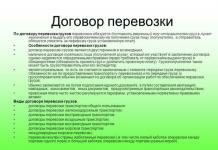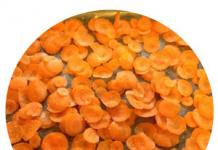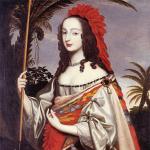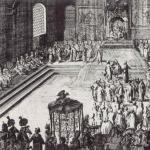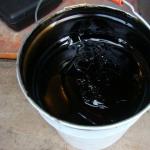Birds have always looked like creatures of a higher order in human eyes. Free, beautiful, amazing. Scientists have long studied different species of birds, trying to understand the mechanism of flight that is inaccessible to other animals except bats. Millions of years ago, birds, according to some scientists, evolved from surviving small dinosaurs. However, among them there was a prehistoric predator capable of killing a horse: a predatory bird-lizard, up to 2 meters tall with a huge head. Yes, birds also have a formidable ancestor. Now birds of prey are, of course, much smaller, but they are still able to inspire awe and admiration with their appearance and behavior. Some of them are considered dangerous even to humans and require respect.
Predators of Kuban
The Krasnodar region is famous for its mild climate and many species of animals, birds and, of course, plants feel good here. The food chain evolved over millions of years until the appearance of man made its own adjustments. Many species simply disappeared forever, others were forced to adapt to new living conditions. What birds of prey live in Kuban now?

The black kite is a beautiful, noble bird that is easy to recognize even to an ignorant person; it is enough to notice it in the sky, soaring, making large circles over the chosen place. Then, after waiting a moment, it falls down like a stone and, putting out its dangerous claws, pursues its prey. The kite has large wings and a wide, long tail.  This helps the bird to soar, catching the slightest air movements and not waste extra energy for flight. The kite hunts small reptiles, mice or hamsters, and other birds, and does not disdain carrion if it finds it.
This helps the bird to soar, catching the slightest air movements and not waste extra energy for flight. The kite hunts small reptiles, mice or hamsters, and other birds, and does not disdain carrion if it finds it.
Sary, also called “buzzard”, is a small predator. He lives in the forest belt of the Kuban, it is more convenient for him to build nests there, far from prying eyes. But the hunting grounds of the sarog are the steppes, because the bird looks out for rodents, insects and peaceful birds.
The heron is also considered a predator, and quite a popular one at that. Its long legs and demeanor make the bird recognizable. With its keen eyesight, the heron looks out for frogs and their tadpoles. You can see white, gray and yellow ones, as well as night herons, great and little bitterns. Herons are not permanent residents of the Kuban; they migrate seasonally.
Large eagle owls, known for their large, intelligent eyes and quiet hoots, live in the thicket of forests and large ravines. There are individuals weighing 3 kg, most often red in color. The eagle owl hunts at night; it is convenient for him to look out for unwary rodents without competition, because kites sleep at night. The eagle owl flies silently and can move very quickly if it wants. A real night killer.
The long-eared owl is a small competitor to large eagle owls; it also feeds on rodents. Moreover, it is known for its greed - the bird hunts all the time, even if it is full. Having eaten, the owl hides the prey, but then does not use the “stash”. Scientists cannot really explain the mystery of this behavior. Greed? Forgetfulness? Or caring for other predators? After all, such “stashes” can theoretically be detected by smell by other birds of prey.

Wonderful pictures with migratory and wintering birds. Which birds remain to spend the winter in their homeland, and which ones fly away?
Walking through a park or forest, we listen to birds singing and often simply don’t think about which bird trills so nicely. There are birds that live in our area all year round, but there are also those that fly to “warmer climes” in the fall.
The fact is that in winter it is very difficult for birds to find food for themselves, because insects, berries and grains become scarce, and when snow falls, it is almost impossible to find them at all. And different species of birds solve this problem in different ways: migratory birds fly hundreds and even thousands of kilometers to warmer countries, while sedentary birds adapt to our harsh winters.

 A tit in the snow, which apparently wants to eat some seeds
A tit in the snow, which apparently wants to eat some seeds Settled, wintering birds: list, photos with names
To help the birds that remain over the winter find food, feeders are hung. And it is quite possible that they will be of interest to the following visitors:
- Sparrow. Noisy sparrows that fly in flocks may well become the first visitors to the feeder.


- Tit. Tits are in many ways not inferior to sparrows; they quickly rush to feed in feeders. But compared to sparrows, tits are endowed with a more gentle disposition. Interestingly, in the summer the tit eats almost as much food as it weighs. You can often see mixed flocks of both sparrows and tits at feeders.




- Gaichka. A close relative of the tit. However, the chickadee's breast is not yellow, but light brown. The chickadee also differs from other tits in that it makes a hollow in a tree to make a nest in it.

 The chickadee is a special type of tit
The chickadee is a special type of tit - Crow. Ravens are often confused with rooks. It is known that in the western part of Russia crows are very rare. Therefore, if you live in the European part of Russia and see a black bird emitting a piercing croak, then most likely it is a rook.


- Pigeon. The distribution and lifestyle of pigeons was largely influenced by people who simply brought them with them to different parts of the Earth. Now pigeons are found on all continents except Antarctica. Pigeons easily exchange rocks, which are their natural habitat, for man-made structures.

 The nodding gait of pigeons is due to the fact that this makes it easier for them to examine the object of interest to them.
The nodding gait of pigeons is due to the fact that this makes it easier for them to examine the object of interest to them. - Woodpecker. In the warm season, woodpeckers feed mainly on insects, which they get from under the bark of trees, and in the cold winter, they can also feed on plant foods: seeds and nuts.


- Magpie. The magpie is considered a bird of high intelligence; it is capable of expressing a lot of emotions, including sadness, and can recognize its reflection in the mirror. It is interesting that not only its fellow birds react to the alarming cry of a magpie, but also other birds, as well as wild animals, in particular bears and wolves.

 Magpie - wintering bird
Magpie - wintering bird - Owl. Owls come in different varieties, large and small, and there are more than 200 species in total. These birds are endowed with acute vision and excellent hearing, which allows them to lead a nocturnal lifestyle. It’s interesting that the tufts on an owl’s head are not ears; owls’ real ears are hidden in the feathers, and one of them is directed upward, and the other downward, in order to better hear what is happening above the head and on the ground.

 Owl is a night bird
Owl is a night bird - This bird is also considered an owl and is a close relative of other owls.


- A rare owl that lives mainly in mountainous areas in northern latitudes. The name of the bird, according to different versions, means “inedible” or “insatiable.”


- Jackdaw. Externally, jackdaws are similar to rooks and crows; moreover, there are mixed flocks in which all three species of birds can be seen. However, the jackdaw is smaller in size than the crow. And if you are lucky enough to observe a jackdaw up close, you can easily recognize it by the gray color of some of its feathers.


- Nuthatch. This little bird climbs tree trunks very deftly. In summer, nuthatches hide seeds and nuts in the bark, and in winter they feed on these supplies.


- Crossbill. Like the nuthatch, this bird is excellent at climbing trees and can hang upside down on branches. Crossbill's favorite food is seeds from spruce and pine cones. This bird is remarkable in that it can hatch chicks even in winter, but only if there is enough food.


- Bullfinch. Only males have bright red plumage on the chest; females look much more modest. Bullfinches are more often seen in winter, because due to lack of food, they are drawn to people. In summer, bullfinches prefer wooded areas and behave inconspicuously, so they are not easy to see.


- Waxwing. A bird with beautiful plumage and a singing voice. In summer it feeds mainly on insects and likes to settle in coniferous forests. In winter, the waxwing moves to more southern regions of the country and is often found in cities. In the cold season, rowan and other fruits become the main food for birds.


- Jay. A large bird, which, however, can fly to feast on a feeder hung by people. In the summer it is rarely seen in the city, but closer to winter the bird begins to reach out to human habitation.


- Kinglet. One of the smallest birds, the weight of an adult male is only 5-7 grams. Kinglets are relatives of sparrows.

 Kinglet - forest dweller
Kinglet - forest dweller - . A large bird that is a favorite trophy for many hunters. Pheasants can fly, but most often move on foot.


- Grouse. It is also an object of hunting, despite the fact that this bird is quite small. The weight of an adult hazel grouse rarely reaches 500 g. Interestingly, the largest population of these birds lives in Russia.

 The hazel grouse is a bird that is related to the black grouse
The hazel grouse is a bird that is related to the black grouse - Another bird that is related to hunting. Black grouse are found at the edge of the forest and in the forest-steppe.


- Falcon. It is considered one of the smartest birds on the planet and one of the best hunters. The falcon is capable of working in tandem with a person, but it is very difficult to tame it.


- . Like the falcon, it is a bird of prey. A hawk's vision is 8 times sharper than a human's. And rushing after prey, the hawk can reach speeds of up to 240 km/h.


Migratory and nomadic birds: list, photos with names
- Rooks differ from crows in having a gray-yellow beak. In Kuban and Ukraine, you can see how in the fall rooks gather in huge flocks, so large that the sky seems black from the birds soaring in it - these are rooks that fly south. However, rooks are classified as migratory birds only conditionally, some of them remain to winter in central Russia, some winter in Ukraine, and only some birds fly to the warm shores of Turkey for the winter.


- They really like to fly to freshly dug ground, sometimes they fly right behind a plowing tractor in order to have time to get as many worms and larvae as possible from the dug up ground.


- This inconspicuous bird with a singing voice loves warmth, and therefore flies south in the fall. And for wintering, our native nightingales chose hot Africa. These birds fly to the eastern part of the continent - Kenya and Ethiopia - for the winter. However, local residents cannot enjoy their singing, because nightingales sing only during the mating season, which takes place in their homeland.


- Martin. Swallows love rocky terrain; they often settle on the steep walls of quarries that people have dug. However, our winters are too harsh for swallows and therefore in the fall they fly to the southern part of Africa, far from us, or to Tropical Asia.


- Chizh. Like the rook, it is a migratory bird that arrives early and winters nearby: in the Caucasus, Kazakhstan and southern Europe. Externally, siskins are inconspicuous, their gray-green feathers are absolutely not noticeable against the background of the branches. The bird's temperament matches its appearance: quiet and meek.


- Goldfinch. In Europe it is a wintering bird, however, in Russia goldfinches can only be seen in summer. By winter, goldfinches gather in flocks and move to lands with a warmer climate. Goldfinches are close relatives of siskins.

 The goldfinch is one of the most colorful birds
The goldfinch is one of the most colorful birds - A slender bird that runs quickly along the ground and shakes its tail with every step. Wagtails spend the winter in eastern Africa, southern Asia, and sometimes southern Europe.


- Quail. The only bird from the Galliformes order that is migratory. The weight of an adult quail is not so large and amounts to 80-150 g. In summer, quails can be found in fields sown with wheat and rye. Quails winter far beyond the borders of our homeland: in southern Africa and southern Asia, on the Hindustan Peninsula.


- Thrush. The song thrush, with its sweet trills, creates worthy competition for the nightingale. And his appearance, like that of the nightingale, is inconspicuous. In winter, blackbirds become Europeans: Italy, France and Spain are their second homeland.


- Lark. Larks return from warm countries very early; sometimes already in March you can hear their sonorous song, which becomes a harbinger of spring warmth. And larks spend the winter in Southern Europe.


- Gull. With the onset of cold weather, seagulls living on the coasts of the northern seas migrate to the Black and Caspian Seas. But over the years, seagulls are increasingly drawn to people, and increasingly remain to spend the winter in cities.


- . Swifts winter in Africa, and fly to its equatorial part or even go to the southern part of the continent.


- Starlings really need birdhouses, since most often they breed their offspring in them. And our starlings go to Southern Europe and East Africa for the winter.



 This bizarre black cloud is a flock of starlings returning home
This bizarre black cloud is a flock of starlings returning home - Finch. Finches from the western part of the country winter mainly in Central Europe and the Mediterranean, and finches that live near the Urals in the summer go to winter in Southern Kazakhstan and the southern regions of Asia.

 Chaffinch - a noisy inhabitant of the forest
Chaffinch - a noisy inhabitant of the forest - Heron. It is quite difficult to determine where herons spend the winter; some of them travel enormous distances to South Africa, some winter in the Crimea or the Kuban, and in the Stavropol Territory, herons sometimes even remain for the winter.


- Crane. These birds are monogamous, and once having chosen a partner, they remain faithful to him throughout their lives. Cranes settle in swampy areas. And their wintering places are as diverse as those of herons: Southern Europe, Africa and even China - in all these parts of the world you can find cranes that have flown from Russia to spend the winter.


- Stork. In Russia there are black and white storks. White storks build huge nests, up to one and a half meters wide, and make very long flights to the south. Sometimes they cross half the planet and reach South Africa, a country located in the very south of Africa.


- Swan. The swan is a bird that represents devotion and romance. Swans are waterfowl, so for wintering they choose places near water, often the Caspian or Mediterranean Sea.


- Duck. Wild ducks, as a rule, do not fly far in winter and remain in the vast expanses of post-Soviet states. It is noteworthy that their domestic relatives also begin to worry in the fall and sometimes try to fly away, sometimes they even fly over fences and fly short distances.


- . Cuckoos live in forests, forest-steppe, and steppe. The vast majority of cuckoos fly to tropical and South Africa for the winter; less commonly, cuckoos winter in South Asia: India and China.


- . A small bird with a singing voice and bright plumage that flies to the tropics for the winter.


- . They wake up at dawn and are among the first to start the morning song. This little songbird used to be called a robin. Robins fly to Southern Europe, North Africa and the Middle East to spend the winter and are among the first to return home.


What is the difference between migratory birds and wintering birds: presentation for preschoolers



 Slide 2
Slide 2 
 Slide 3: presentation of migratory birds
Slide 3: presentation of migratory birds 

















Why do migratory birds fly to warm regions where they spend the winter, and why do they come back?
Winter is a harsh test for birds. And only those who can get food for themselves in harsh conditions remain to spend the winter.


What are some ways for birds to survive in cold weather?
- Some birds store food for the winter in the summer. They hide plant seeds, nuts, acorns, caterpillars and larvae in grass and cracks in tree bark. Such birds include the nuthatch.
- Some birds are not afraid of people and live near residential buildings. In winter, they find food in feeders and garbage heaps.
- Some birds are predators and feed on rodents. There are birds of prey that can feed on hares, hunt fish, small birds and bats.


If a bird can find food for itself in winter, it means it does not need to go on a tedious and difficult flight to warmer climes in the fall.


It would seem that everything is simple, and the only reason for the seasonal migration of birds is the lack of food. But in reality there are more questions here than answers. For example, imagine that a wild duck, which is a migratory bird, is provided with an artificially heated pond and a sufficient amount of food. Will she stay for the winter? Of course not. She will be called on a long journey by a strong feeling that is difficult to explain, called natural instinct.


It turns out that birds fly to warmer regions, as if out of habit, because their ancestors did this for hundreds and thousands of years.


Another question that needs an answer: why do birds return from warm countries every spring? Ornithological scientists have concluded that the beginning of the return flight is associated with the activation of sex hormones and the beginning of the breeding season. But why do birds fly thousands of kilometers and hatch their chicks exactly where they were born? Poets and romantic people say that birds, like people, are simply drawn to their homeland.
How do migratory birds know where to fly? A question to which to this day there is no clear answer. It has been experimentally proven that birds can navigate in completely unfamiliar terrain and in conditions of limited visibility, when neither the sun nor the stars are visible. They have an organ that allows them to navigate the Earth's magnetic field.
But the mystery remains how young individuals, who have never flown to warm regions before, find their own wintering place, and how do they know the route to fly? It turns out that in birds, at the genetic level, information about the point on the map where you need to fly is recorded and, moreover, a route to it is drawn.


Do migratory birds build nests in the south?
Birds wintering in warm regions do not lay eggs or hatch chicks, which means they do not need a nest. A nest is needed only for chicks that migratory birds will hatch in their homeland.


Which birds are the first and last to arrive in spring?
They arrive first in the spring rooks. These birds return to their homeland in early spring, when the first thawed patches in the snow appear. With their strong beaks, rooks dig out larvae in such thawed areas, which form the basis of their diet.
The last to arrive are the birds, which feed on flying insects. These are swallows, swifts, and orioles. The diet of these birds consists of:
- Komarov
- Moshek
- Horseflies
- Zhukov
- Cicadas
- Butterflies
Since the emergence of a large number of adult flying insects from larvae requires warm weather and about two weeks of time, the birds that feed on them fly to their homeland after the mass appearance of these insects.


Which birds are the first and last to fly away in the fall?
With the onset of autumn cold weather, insects complete their active life cycle and hibernate. Therefore, the birds that feed on insects are the first to fly to warmer climes. Then the birds fly away and feed on the plants. Waterfowl are the last to fly away. There is enough food in the water for them even in autumn. And they fly away before the water in reservoirs begins to freeze.
VIDEO: Birds fly south
What flock of migratory birds promises snow?
According to popular belief, if a flock of wild ones flew south geese— you need to wait for the first snow to fall. This sign may not coincide with real weather phenomena. So in the north of Russia, geese fly to warmer climes in mid-September, and snow can fall much earlier. Let's say the first snow in Norilsk this year fell on August 25th. In the south, geese fly to warmer climes at the end of October, and sometimes even at the beginning of November. The first snow in these areas may occur around this time. But it all depends on the weather conditions in autumn. Indian summer here can last throughout October.
VIDEO: Geese gather in flocks to fly south
Which bird from the order Galliformes is migratory?
A migratory bird from the order Galliformes is quail. The quail's habitat extends beyond Russia in the west and south. In the east, these birds live up to the western coast of Lake Baikal. They are widespread in Europe, Western Asia and Africa.


For the winter they fly south. And they winter in Hindustan, Northern Africa and South-West Asia.
VIDEO: How do migratory birds fly?
Birds are considered the highest of vertebrates, they have feathers and their upper limbs became wings. They have access to the sky and birds spend most of their lives in flight. Perhaps the feathers were wool, which once served as protection from cold and moisture, but now helps with aerodynamics. However, feathers also have protective functions. Birds' skin itself is dry and does not have sweat glands. Waterfowl species have one gland left, which secretes special fat. It is located under the tail and helps them in swimming. Fat protects the bird's body from moisture penetration during swimming and diving.
Bird species
One species with an interesting name, the great grebe, lives in the Krasnodar region itself. It is also called the great grebe. Great grebes can be found in the thicket of thickets near the water, and ordinary people call grebe for the fishy smell of its meat. The bird itself is beautiful - it is dark brown in color, with gray cheeks and a crest of black and red feathers. The Great Grebe is a waterfowl that builds nests. The great grebes take care of their offspring and each time leaving the nest, they hide them with plants. She carries the hatched chicks on herself for the first time until they grow up and begin to swim. It feeds on fish and shellfish.
You can also find great cormorants in Kubina - these are large birds that love estuaries. The cormorant has a long neck, shiny black plumage, and large strong wings. He needs 1.5 kg of fish per day. Cormorants dive and swim well in search of it.
Karavayka also lives in the estuaries near the Black Sea. Usually it is found in willow forests. This is a beautiful brown bird with a long beak. Hunts frogs and tadpoles.
Several species of herons live in the Kuban area - white, red-colored, and yellow. There are also night herons and great and little bitterns. Herons do not stay in one place, they migrate seasonally, feeding on fish, small animals, and of course frogs.
The writing swan is also found in those places. An individual can weigh 13 kg. Known for his silence. The bird does not like to make loud sounds; in extreme cases, it hisses, hence the name. Eats plants and small invertebrates, swims well.
The black kite is a frequent visitor to those regions. It is easy to recognize by its behavior: the predator circles in the sky above the place that interests it. The kite has a wide, long tail, a small head and wide wings, which it lazily moves in the air, catching the wind. Looks out for carrion, reptiles, rodents, and can catch small birds.
The Caucasian pheasant lives in places near lakes or ponds. He flies in extreme cases. Strong, long legs allow the important bird to move deftly on foot. Nesting sites are hard-to-reach thickets of various bushes. Food: Colorado beetles, berries and insects.
Gray partridges prefer the steppes. They are small, up to 500g, no more. They move deftly both on the ground and in the air. They chirp loudly and are able to take off even vertically, without a run-up. Partridge nests are located on the ground and rodents, such as ferrets, for example, sometimes do not hesitate to feast on their chicks.

Kuban is a historical and cultural region in southwestern Russia. More than three hundred species of birds live on its territory, some of them are listed in the Red Book. What species are found in this region? What birds are called Kochet in Kuban? We will try to answer these questions in this article.
Kuban region
Kuban or Krasnodar Territory is located in the North Caucasus, covering the eastern coast of the Azov and Black Seas. This is a cultural and historical area in which unique everyday and cultural features have formed.
There are even unique names for some animals here. For example, do you know what birds in the Kuban are called Kochet? Petukhov. Most likely, the word appeared in Ancient Rus' from the word kdkot, and this latter, in turn, arose as an onomatopoeic word (ko-ko-ko).
There are many natural zones within the region - from steppes to subtropical forests and alpine meadows. This diversity attracts a variety of animals. More than 80 species of mammals, about 10 amphibians, 20 reptiles and 300 species of birds live in the Kuban. Detailed descriptions of some bird species of Kuban with photos can be found below.
There are many small rivers and lakes in the region, including Abrau - the largest lake in the North Caucasus. The weather in the region is variable and varies greatly throughout the year. In spring, rivers often overflow their banks, flooding their valleys.
The climate of the Krasnodar Territory is mainly temperate continental, and subtropical in coastal areas. Part of the region is occupied by coniferous and deciduous forests. In the area of Anapa and the Taman Peninsula, steppes with estuaries predominate. In the mountains, vegetation and conditions change with altitude. Thus, the zone with deciduous and coniferous forests gradually turns into low grasses and berry bushes.
Bird resettlement in Kuban
Steppes with estuary lakes and growing cereals, rivers, lakes, dense forests - all this attracts many birds. In the northern part of Kuban, birds are represented by crows, eagles and larks.
Estuaries and floodplains are a favorite place for birds. There are more than 200 species of them here. Many arrive only during the nesting period or during migration, but about a hundred species remain for the winter. Pelicans, eagles, herons, cranes, laughing gulls, lapwings, geese and waders can be found in these areas.
Seagulls, sea plover, oystercatchers, diving ducks, cormorants and petrels live on the sea coasts. Their diet is more exotic than that of the inhabitants of the estuaries. The seabirds of the Kuban can catch not only fish, but also rapans, crabs, and shrimp.
The forests are home to woodpeckers, blackbirds, jays, orioles, goldfinches, owls and tits. Among the birds there are also lovers of steep cliffs, for example, rock and rock pigeons. Sparrows, swallows, and blue rollers live in open forests, low groves and floodplains.
Birds of the Red Book of Kuban
Despite the large number of birds in the region, some species are quite rare, while others are completely endangered. Birds of the Kuban listed in the Red Book: ibis, white stork, demoiselle, Dalmatian pelican, avdotka, white-tailed eagle, ogre, little cormorant, crow sandpiper, etc. There are 57 species in total.
Vulnerable species, the number of which decreases every year, are the pallid mockingbird, the great lentil, the great curlew, the bustard, and the Caucasian snowcock. Endangered species include golden eagles, bearded vultures, white-eyed ducks, and rare species include golden plovers and Caucasian grouse.
Of the 2,000 individual golden eagles living in Russia, there are only four pairs in the Krasnodar Territory. There are up to 7 pairs of white storks in the region, although in some periods more than a hundred of them arrive. About 40 demoiselle cranes arrive from other places, leaving only 8 pairs to nest.
The number of birds is decreasing both for natural reasons and thanks to humans. Some species disappear due to lack of food, others die at birth due to long periods of bad weather. Poaching and sport hunting, the transformation of natural areas into agricultural land and recreational areas are also a serious factor.
Pied Rock Thrush
The rock thrush is a small bird that lives in high mountain areas, as well as in the area of Gelendzhik and Novorossiysk. Female Pied Thrushes have a modest appearance and grey-brown plumage. Males are bright, with blue feathers on their heads and orange breasts.
They settle near sea cliffs, in high mountain meadows covered with grass, and in woodlands. They build their nests in rocks or ground. They are a vulnerable species. There are approximately 60 individuals of these birds left in the Kuban.

Coot
The coot represents the waterfowl of the Kuban. It is similar in size to a duck and reaches a length of forty centimeters. The bird is found in steppe regions, in the upper reaches of the Kuban River. She prefers estuaries, river valleys and slightly salty or fresh lakes. It builds nests directly in the water, in areas with shallows or in
The body of the coot is matte black or dark gray, with a small white spot on the head (this is where the name comes from). The bird's beak is also white, slightly compressed laterally. The legs are yellow, and the toes are long and gray, with wide webs.
In addition to the Krasnodar Territory, the coot lives in Asia, Africa, Northern and Western Europe, Australia and the nearest islands, the Mediterranean and the Far East.

Dalmatian pelican
One of the endangered birds of Kuban. In the region, the Dalmatian pelican settles in the area of the Taman Peninsula and the Eastern Azov region. Prefers areas with floodplains and estuaries. Currently, up to 70 pairs of pelicans live in the Krasnodar Territory. Their numbers are decreasing due to capture, extermination, and water pollution.
This is a large bird with a body length of up to 180 centimeters. Its wingspan reaches 3.5 meters. A characteristic feature of a pelican is its beak. It grows up to 50 centimeters in length. The Dalmatian pelican is white in color and has feathers that curl like curls on its head and neck.
Mostly birds stay in groups. They feed exclusively on fish, so they spend a lot of time on the water. They nest in reed thickets or on small overgrown islands.

Dwarf eagle
The pygmy eagle lives in the mixed forests of coastal areas. This is a fairly common bird in Kuban. The eagle can settle in and sometimes in coniferous forests. In the Krasnodar Territory, it inhabits the environs of Novorossiysk, Gelendzhik, Mezbay and Psebay.
The bird is small in size. It resembles a buzzard, but has characteristic eagle-like features. The tail of the dwarf eagle is long, the wingspan is 1.3 meters. The beak is curved and short.
There are two colors of plumage of these eagles. One is dark, brown-brown, sometimes reddish or golden. The other is light brown with a darkish bottom. The peculiarity of the birds is their large head and shaggy strong legs.

Little Bustard
Little Bustard is a rare bird that lives only in the steppe. It belongs to the bustard family. The color of the bird on top is sandy or brown with black spots, the belly is white. During the mating season, the males' plumage changes - the neck becomes black with two white stripes.
The bird's flight is unique. It appears as if it is trembling or trembling, making a whistling sound. Little bustards live in pairs and gather in flocks only before flying to their wintering grounds.
In the Kuban, the bird nests in the Novopokrovsky district and on the Taman Peninsula, and during its migration it is found on the Black Sea coast. Due to hunting and the reduction in the area of unplowed steppes, the population is rapidly declining.

Night heron
The common night heron is also called the night heron. She bears little resemblance to members of her family. Unlike other herons, its beak, legs and neck are not so long. Young birds have brown plumage. As they grow, the color changes. The sides and belly become white, and a black stripe stretches from the beak along the entire back. Several long white feathers grow on the back of the head.

The night heron settles near bodies of water with dense vegetation and in forests. It lives on all continents except Antarctica and Australia. It is not active during the day and can sit motionless for many hours. With the arrival of dusk, she “comes to life” and begins hunting frogs and fish.
Oriole- one of the most beautiful birds and one of the best songbirds of our forests. It should be added that, by eating many harmful insects, the oriole brings us great benefit. Of course, you want to know who is yelling so disgustingly? It’s hard to believe, but both beautiful and unpleasant sounds are made by the same bird. It is not for nothing that the oriole is called the forest flute and the forest cat.
Terns-The length of the bird is 36-43 cm, the wingspan is 74-84 cm. It is white in color, with a black cap and a gray mantilla, the tail is forked, heavily carved. In spring and summer the beak turns red. The legs are short, which is why he walks waddling. It nests in colonies in rocks or on beaches. Monogamous, pairs form for life. They fly 10-12 m from the surface of the water, hunting fish, crustaceans, mollusks, insects, and earthworms. They may also eat berries at nesting sites.
Reed chicken - Moorhen somewhat lessteal ; has a body that is strongly flattened laterally, and long legs with well-developed toes, it swims well and can dive. In search of food, it leaves the reed beds and remains for a long time on open reaches. While swimming, it tilts its head in time with the movement of its legs and every now and then twitches its short, raised tail. Fromcoots It is well distinguished by its relatively small size and bright (with a predominance of red) beak (in adult individuals), and its dark, almost black color and size distinguish it from other related species.
Kingfisher- a small bird the size of a sparrow. The kingfisher has motley plumage and a sharp long beak adapted for catching fish. This bird settles exclusively near bodies of water, because it feeds on the gifts of water - small fish no longer than six centimeters
There are many explanations for the origin of this word. Many people believe that the bird was named this way because it nests, that is, it is “born” in winter, but this is not at all true - kingfishers hatch their chicks in the second half of spring.
Their name has nothing to do with winter at all - it is a corruption of "shrew" or "shrewfish". Kingfishers choose steep banks for nesting and dig a hole in the vertical wall in which they hatch their chicks. That is, birds are actually born in the ground, which is why they got their name.
Night heron has a short neck compared to other herons and a short, but strong and powerful beak. The legs are also shorter than those of other herons. The male in breeding plumage has a black cap with a greenish tint and a back of the same color. The wings are gray. The belly and sides are white. In the spring, 2-4 long narrow white feathers grow on the back of the head. The beak is black, the legs are yellow or pinkish with long toes. The female has a similar color. Young birds are dark brown with longitudinal streaks. Downy chicks are white.
Cuckoo- a migratory bird; for the winter it migrates to tropical Africa. But an interesting thing: most birds make their flights in flocks, but no one has seen flocks of cuckoos. In autumn they disappear imperceptibly, the older generation earlier, the younger generation later. They usually fly at night and, most likely, alone. Cuckoos feed on various insects, which they eat in large quantities almost all day long. Cuckoos benefit greatly by eating furry caterpillars coated in poison. Other birds ignore such treats. If there are more cuckoos than usual in any forest area, this is a sure sign that a particularly dangerous infestation of caterpillars is occurring in this area. Eyewitnesses saw how some of the cuckoos swallowed up to ten caterpillars per minute! So for the forest, the cuckoo is a very useful bird, because by destroying millions of pests over the summer, it completely atones for its “guilt” of killing innocent chicks of other species.
Martin is a small bird that flies to us in late spring - early summer from distant Africa, Hindustan and Indochina, as well as the Malay Islands. The bird is widespread in Europe, Asia, Sakhalin, the Japanese and Kuril Islands. The swallow is distinguished from other birds by its black silk tailcoat, white breast and sharp forked tail. This is an agile, graceful bird, constantly soaring in the air, capable of drinking on the fly and even dipping into the water for a moment. The swallow nests in the valleys of mountain rivers, where it settles in rocky caves and rock crevices, less often in burrows. Most swallows, adapted to life in cities and large villages, settle under balconies and roofs of buildings. The nest of this bird is a neat spherical structure made of straw, clay and earth. After building a nest, the happy young couple will soon have chicks whose main food is insects. It is at the moment of their appearance that adult swallows fly to us. With the advent of the first cold weather, swallows will fly away to distant shores.
Chiffchaff- singer of endless forests stretching across a vast expanse of the globe.
It winters mainly in warm regions, off the coast of Africa, and in the southern regions of Asia. The warbler arrives in our region in April.
In appearance, the bird is not particularly remarkable: the back is grayish-brown, the belly is lighter, the legs are dark. The main distinguishing feature of this bird is its singing, the sounds of which resemble drops: “shadow-shadow-shadow.” That's why they called her the chiffchaff, and for her wonderful singing - the warbler.
The Chiffchaff is a characteristic inhabitant of coniferous forests. The warbler places its nest not high from the ground, usually in the thick of spruce paws, on stumps or simply on the ground. Feathers are the main material used for construction. This is a hemispherical building with a side entrance. In a cozy nest, soon, closer to May, the warbler will have its first chicks.
She loves to eat spiders and small caterpillars, and at the end of summer - elderberries. In autumn, warblers with young offspring join flocks of tits and wander with them through forests and gardens. In September, the warbler will begin to prepare to fly away for the winter.
Chizh is a grayish-green bird with a timid character, small, quiet, inconspicuous. No matter how much you try to find a siskin’s nest among the large green paws of a spruce tree, it is in vain, this bird knows how to camouflage itself.
The siskin got its name from the characteristic “siskin” squeak that individual birds in flocks continuously call to each other. The song of the siskin is quite diverse and consists both of its own short “words and blows” and of imitating the singing of other birds, mainly tits.
The construction of the nest is carried out by the female, but the material is supplied exclusively by the male. Siskins always spend spring and summer in the coniferous forest, where their chicks appear. The male and female feed them insects and plant seeds softened in the crop.
At the end of summer, siskins migrate to deciduous forests - birch and alder forests; they are attracted here by birch and alder seeds. Siskins' favorite food is alder seeds, which they take from cones, hanging from them on tenacious legs, sometimes even upside down. In winter, the siskin feeds mainly on birch seeds, and in summer not only on seeds, but also on insects.
The cold and severe frosts will pass, the sun will peek into our windows, these modest peaceful birds will fly in again and make themselves known in early spring.
The siskin is one of the most common songbirds kept at home due to its intelligence and trust in humans. Because of this gullibility, siskins easily fall into all traps. They tolerate captivity quite well, become very tame, learn different tricks and can even bear offspring..

